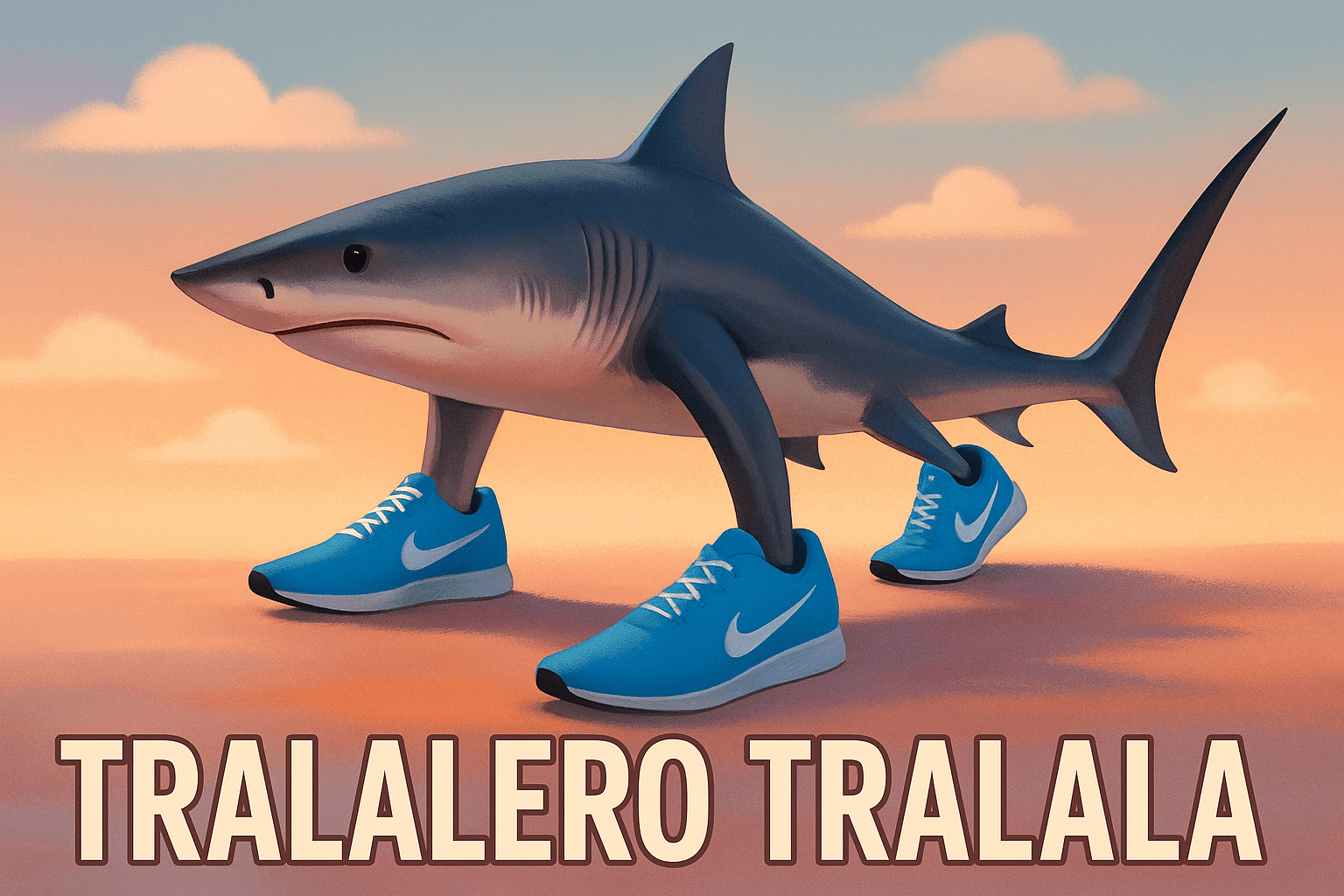
Tralalero Tralala 🧠 Qué significa, de dónde viene y por qué se volvió viral
¿Qué es Tralalero Tralala?
Tralalero Tralala is a bizarre, AI-generated character that took TikTok and Instagram by storm in early 2025. At its core, it’s a meme — but not just any meme. It’s a chaotic, surreal explosion of internet creativity known as part of the Italian Brainrot trend. The character itself? A three-legged shark in blue Nike sneakers, dancing or floating while a nonsensical chant plays in the background. It’s funny, unsettling, and endlessly remixable — making it perfect viral material.
¿Qué significa Tralalero Tralala?
Honestly? Nothing. That’s the point. “Tralalero Tralala” is a rhythmic chant with no logical meaning — a verbal representation of absurdity. While it may sound Italian, it’s not grammatically correct or coherent in any language. That’s part of the meme’s genius: it mimics meaning without delivering it, making it a perfect emblem of modern internet humor where absurdity wins over clarity.
Letra de Tralalero Tralala y traducción al español
Warning: contains profanity.
Tralalero tralala
Porco Dio, porco Allah
Tutto rotto nella testa
Tralalá tralalero, boom boom
In English, the rough translation would be: “Pig God, Pig Allah — Everything broken in the head — Boom Boom.” This part has sparked controversy, with some accusing the meme of blasphemy or cultural insensitivity. But in meme terms, it’s a brainrot artifact — meant to shock, confuse, and entertain all at once.
Tralalero Tralala y Bombardino Cocodrilo
Tralalero Tralala isn’t alone. Another major character is Bombardino Cocodrilo, a crocodile-bomber plane hybrid. The two are often depicted in mock “versus” formats — imagined battles, comparisons, or simply coexisting in absurd universes. These characters are deliberately uncanny, using warped anatomy and exaggerated motion to tap into the “weirdcore” aesthetic of Gen Z meme culture.
El fenómeno del meme Italian Brainrot
The meme originates from a broader genre called “Italian Brainrot,” which blends AI art, stereotypical Italian phrases (real or fake), and chaotic audio. It often includes animals fused with machinery, food, or random objects, like Ballerina Cappuccina or Chimpanzini Bananini. The format is simple: weird visuals + distorted Italian + funky beats = viral gold.
¿Por qué se volvió viral?
Part of Tralalero’s magic is that it doesn’t try to make sense. It capitalizes on randomness, surreal visuals, and unexpected audio to create an “infinite scroll” effect — people can’t help but watch, laugh, comment, or remix. TikTok and YouTube Shorts accelerated the spread, and once the shark started “singing,” there was no going back.
Juguetes, GIFs y contenido derivado
Fans quickly jumped in. Tralalero Tralala plush toys, bootleg action figures, and GIF packs began circulating. Etsy sellers offered unofficial merch. On social media, Baby Tralalero Tralala versions, animated GIFs, and AI-generated fan art flooded timelines. It became more than a meme — it became a mini-franchise of nonsense.
¿Es ofensivo Tralalero Tralala?
Some believe so. Religious references in the audio and the surreal violence of certain visuals sparked criticism. Others see it as a satire of modern content overload — a reflection of how internet culture rewards absurdity over substance. Whether offensive or genius, it’s certainly unforgettable.
Preguntas frecuentes
¿Cuál es el significado de Tralalero Tralala?
It has no direct meaning. It’s part of a brainrot meme intended to be absurd and meaningless on purpose.
¿Es italiano?
Not really. It mimics Italian phrases but mostly in a satirical or broken way.
¿Existe una versión oficial?
No. It’s a community-generated meme with infinite variations and reinterpretations.
Sobre el autor
Jake Williams is a meme culture analyst and freelance internet journalist. He has been writing about internet trends, Gen Z humor, and digital absurdity for over a decade. His work has appeared in Vice, Dazed, and independent tech blogs.

 Legiano
Legiano